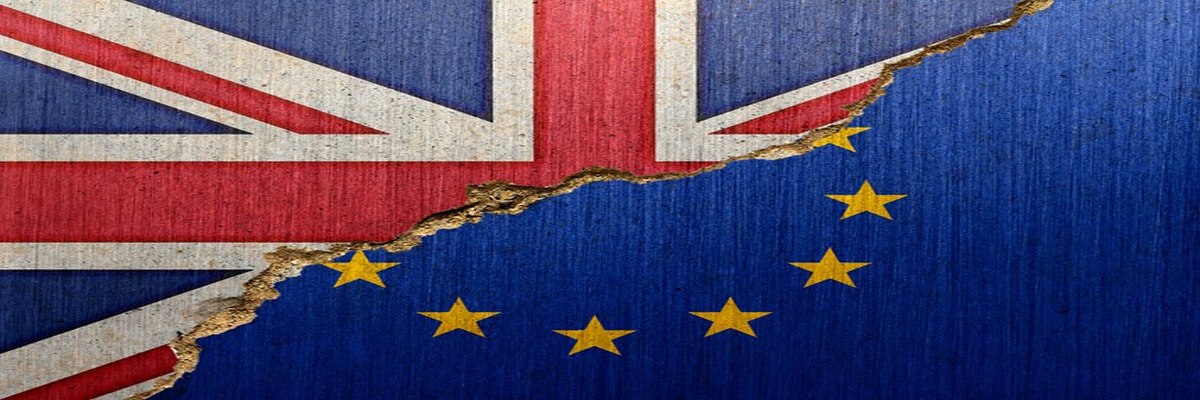This week the Prime Minister cleared two hurdles in her struggle to get Britain out of the European Union.
Her negotiators secured a draft deal with their EU counterparts and, after a five-hour ‘impassioned’ discussion on Wednesday, the Cabinet backed it. Then on Thursday, Cabinet ministers started to resign, including the Brexit secretary himself, Dominic Raab. Now the deal’s future is in the hands of MPs. Can the deal survive, and should it?
It has taken, on Theresa May’s own estimate, ‘thousands of hours’ of effort by British and EU negotiators to come up with a 585-page withdrawal agreement that barely touches on the long-term relationship between the UK and the EU after the two part next March. The focus has been on the nearer term: making sure that in the transition period to that more distant future there is neither economic chaos nor the emergence of a hard border between Northern Ireland and the Irish Republic to the south.
The Prime Minister’s pitch is that this is the best deal possible and that the alternatives are too awful to contemplate. Her claim, which she and her supporting cabinet ministers will be reciting ad nauseam over the coming weeks, is that the deal fulfils the requirements of the British people in voting for Brexit in the referendum of 2016. It takes back, she claims, Britain’s control over its laws, its borders and its money. It will end the free movement of people from EU countries to the UK, the cause of so much pro-Brexit feeling before the referendum. It will restore British control of fisheries and agriculture policy. And it will do all this while preventing the disruption of trade with our major trading partner, protecting jobs, maintaining our security and upholding the integrity of the United Kingdom.
The alternatives, she argues, are either a no-deal Brexit which could cause untold harm to the economy and, in the immediate aftermath of withdrawal next March, major disruption to daily life; or no Brexit at all if the turmoil created by rejection of the deal led ultimately to Britain staying inside the EU after all. Either alternative outcome, she argues, could cause political turmoil and economic cost for years to come.
Yet if the Prime Minister thinks her case overwhelming, it was not sufficiently so to persuade her cabinet colleagues to endorse it in a swift meeting. On the contrary a meeting that had been scheduled to last three hours at most went on for five. Ten cabinet ministers are reported to have spoken out strongly against it and the agreement was described as ‘collective’ rather than ‘unanimous’. The Prime Minister herself characterised the discussion as ‘impassioned’ and by Thursday morning cabinet ministers, including Dominic Raab, were starting to resign.
The Prime Minister’s problem is that she is assailed from all sides. Hardline Brexiteers in her party and elsewhere reject the deal as a complete capitulation. Jacob Rees-Mogg, the chairman of the European Research Group of resolutely pro-Brexit backbench Tory MPs, wrote on Wednesday evening to all Conservative MPs denouncing the deal for, among other things, agreeing to pay the EU £39billion as a withdrawal payment without having secured a long-term trading arrangement; threatening the integrity of the UK by agreeing to a deal that treats Northern Ireland differently from the rest of the UK; and effectively locking Britain into the EU’s customs union indefinitely, so preventing the country from doing its own trade deals with the rest of the world, supposedly one of the main benefits of Brexit.
But equally the deal is assailed from pro-EU members of her party. Last week the transport minister, Jo Johnson, an ardently pro-Remain Conservative, resigned from the government because he argued that the deal that was emerging was the worst of all worlds. It locked Britain into much of the apparatus of the EU, such as the customs union, while depriving the country of any say in the running of the apparatus. This cannot be what those who voted Brexit were voting for, he argued, so the British people should be given a second vote on the deal, with the option of reversing their original decision and staying in the EU after all.
So, with opposition from both sides of the Brexit debate, what is the future of the deal Mrs May has secured? Initially the ball will be in the Europeans’ court, for it has to be approved by the other twenty-seven EU states and by the European Parliament. Given the general view that the EU has come out of the negotiations better than Britain (and that the smile on the face of Michel Barnier, its chief negotiator, was broader in Brussels on Wednesday evening than Mrs May’s on the steps of Downing Street), this may not be a problem. But it cannot be taken for granted.
Should, however, the EU back the deal and confirm it at a special EU Council planned for 25 November, the ball will firmly return to the House of Commons, which is promised a ‘meaningful vote’ on the deal before Christmas. The omens for Mrs May could hardly be worse.
Last year’s election deprived her of her majority and she is kept in power only by the ten votes of the Democratic Unionist Party of Northern Ireland. At the moment no one can see where a majority for the Brexit deal can come from. Labour, officially, will oppose the deal, on the face of it because it argues it is a lousy deal that is the product of a ‘botched’ negotiation, but also because, like any opposition, its chief aim is to defeat the government and try to secure a general election.
It also seems certain that at least twenty-five hardline Tory Brexiteers, such as Mr Rees-Mogg, will vote against the government and the DUP seems likely to do so too, because it argues that parts of the withdrawal agreement treat Northern Ireland differently from the rest of the UK, something it is adamantly opposed to. And the Scottish Nationalists are against the deal because they think Scotland should be offered the same treatment as Northern Ireland (ie keeping it closer to EU structures – Scotland voted in favour of Remain).
Mrs May might have hoped that she could win support from some pro-EU Labour MPs, but many of them (such as Chuka Umunna) seem to take the same line as Jo Johnson: that the deal needs to be thrown out so there be can a chance for another referendum.
In the face of such opposition, does the deal have any hope at all of being endorsed by the House of Commons? Mrs May seems to be relying on two things to change its fortunes. First, she intends to mount a massive campaign to sell what she sees as the advantages of the deal and the extent to which she believes it fulfils the instruction of the referendum. This, she hopes, will erode the scale of the potential rebellion. But she also intends to rely on fear: her case will be that if MPs vote this deal down, they won’t know what they are voting for.
Initially, her pitch was that the only alternative to this deal was no deal, with all that ‘crashing out of the EU’ might imply for trade, jobs, air transport, queues of lorries at Dover, fresh food and medicine shortages and all the rest of it. The government has recently been making contingency plans for a ‘No deal Brexit’ but few believe they are advanced enough to prevent major disruption. MPs, she hopes, will think twice before voting for that.
On Wednesday, however, she warned of another possible consequence of her deal being rejected: no Brexit at all. In other words, in the political confusion that would follow her deal being thrown out, Britain might end up staying in the EU despite the result of the 2016 referendum.
What is clear is that no one really knows what would happen if the House of Commons did throw out her deal and Mrs May is relying on this to bring MPs into line. The Prime Minister used to claim that it would simply mean Britain would leave without a deal. But the constitutional uncertainty is such that no one really knows what would happen if the Commons debated a motion to leave without a deal and that motion itself were thrown out (as it almost certainly would be). What then? Labour would no doubt put down a no-confidence motion in the government, but all Tory MPs (and the DUP) would oppose it in order to prevent a general election. Then there might be a move to call a second referendum, something Mrs May has said the government would oppose in all circumstances, but which she might be unable to prevent if Labour and pro-Remainers in her own party, like Jo Johnson, backed it.
Amid all this speculation, the Prime Minister will be relying on the sheer uncertainty of it all to persuade MPs in all parties that the only way to prevent such chaos and the divisiveness and enduring political and economic turmoil that might follow will be to back her deal. She may be hoping too that adverse reaction in the financial markets, especially on the value of the pound, will bring potential rebels to what she would see as their senses.
Meanwhile, she may be challenged herself. It’s thought that the chairman of the 1922 Committee of backbench Tory MPs, Sir Graham Brady, is close to receiving the forty-eight letters from his colleagues demanding a leadership election necessary to trigger one. Few think that if there were one, it would succeed, but a strong vote against Mrs May would undermine her just when she is trying to win the biggest battle of her political life.
So what should MPs do? Should they back her Brexit deal, despite all the fierce criticisms made of it? Or should they take the risk of taking Britain into the unknown by throwing it out?
What’s your view? Let us know.








